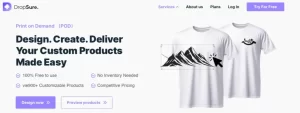
| Enterprise | Steven Guo |
|---|---|
| Brand Name | Medjool Days |
| Business Model | Dropshipping |
| Founded | 2020 |
| Revenue | $12 million |
While most of his peers are still stressing over their first job, 24-year-old Steven Guo has already built 15 e-commerce businesses, generating $12 million in revenue. He didn’t come from a wealthy family, didn’t graduate from a top university, and wasn’t even a standout student in college.
At this point, you might be wondering: In a world where Temu and SHEIN dominate global markets, how did an ordinary young entrepreneur carve out a space in dropshipping? While countless sellers are trapped in brutal price wars, how did he uncover hidden, high-profit niche markets?
Today, we take a closer look at Steven’s entrepreneurial journey—diving into how he scaled multiple businesses to seven figures, his secrets to finding million-dollar products, and the biggest challenges newcomers face in e-commerce.
The Path to Wealth: From Fidget Spinners to a Million-Dollar Empire

High School Beginnings
Steven’s entrepreneurial journey began in high school. At the time, he recognized the booming trend of fidget spinners, sparking an idea to earn pocket money by selling small toys online. He chose Reddit as his promotion platform, tirelessly spamming various subforums. Eventually, the “ding” on his Shopify platform signaled his first order. This small success made him realize the immense potential in e-commerce and fueled his passion to explore further.
University Expansion
In his first year of university, Steven boldly entered a new market: selling anime figurines dressed in Nike sneakers. These creative collectibles quickly gained traction, even attracting celebrity buyers like Justin Bieber. Despite facing copyright issues, he managed to generate substantial income. Over time, he launched multiple brands—some thrived, while others faded—but his total e-commerce revenue has now surpassed $12 million.
Diversified Business Ventures
Today, Steven operates several unique companies. Medjool Days, an online store selling dates directly to consumers; K-pop Jewelry and Fashion, catering to K-pop fans with trendy accessories; and an auto parts brand, whose upcoming products are still under wraps but rumored to be impressive.

Secrets to Success: Finding the Right Direction, Prioritizing Experience, and Managing Finances Wisely
Choosing the Right Direction and Prioritizing Sustainability
According to Steven, the key to success in e-commerce is not necessarily about the amount of work put in but rather about choosing the right direction. The internet is now flooded with various so-called “mentors” claiming that selling TikTok trending products can make money easily. However, in reality, the probability of true success is extremely low, especially with the rise of Chinese companies like Pinduoduo in the e-commerce market, making success even more challenging. Steven emphasizes that the real path to success lies in finding a way to sell unique products—items that immediately catch people’s attention, something that ordinary AliExpress products can hardly achieve.
Additionally, providing high-quality customer experience is also a crucial aspect. Products cannot simply rely on flashy gimmicks; only by doing so can they earn customers’ trust and encourage repeat purchases. Although dropshipping is an effective model to test product viability, to build a truly sustainable business, it is essential to establish a system that ensures long-term customer retention.
Furthermore, managing finances wisely is essential. Steven scoffs at those internet “mentors” who flaunt Lamborghinis and extravagant spending in restaurants, believing that this lifestyle lacks sustainability. Since every business goes through ups and downs, the real reason these people aggressively showcase their luxurious possessions may have ulterior motives.

Focusing on Niche Markets: Big Wealth in Small Spaces
Among Steven’s keys to success, focusing on niche markets is a critical factor. He firmly believes in the idea that wealth lies in niche markets and keenly recognizes the endless business opportunities hidden in underdeveloped fields. He is skilled at observing the interests and hobbies of people around him to identify large potential markets. For example, before venturing into the date fruit business, he knew nothing about this field. However, by thoroughly researching consumer demand, he accurately identified this unique business opportunity.
Steven points out that the core of success lies in deeply understanding target customers, accurately identifying their needs and pain points, and providing targeted solutions. Different target audiences require different marketing strategies. If the target group consists of older consumers, then advertising on Facebook would be a wise choice; if the goal is to attract younger people, then TikTok would be the more effective channel.
Taking his date fruit company as an example, the primary customers are women aged 73 and above. The thousands of five-star reviews from these grandmothers on the company website serve as strong proof of its success.
Here is the table format for the information:
| Target Audience | Content Strategy | Channel Mix | Conversion Path |
|---|---|---|---|
| Gen Z | UGC creation challenges | TikTok + Discord | Influencer promotions → Online store |
| Seniors | Nostalgic storytelling videos | Facebook + Email | Live streaming → Phone orders |
| Car Enthusiasts | Technical teardown videos | YouTube + Reddit | Review articles → Shopify |
Facing Challenges: The Dual Test of Logistics and Management
Despite Steven’s remarkable achievements, his entrepreneurial journey has not been smooth sailing. Logistics management has become one of the biggest challenges he faces while running multiple businesses. Take his date fruit business as an example—seasonal fluctuations in fruit quality and supply require him to adjust business operations flexibly. Meanwhile, in the K-pop jewelry and fashion sector, managing thousands of SKUs (stock-keeping units) presents another major obstacle. Accurately predicting demand, optimizing inventory management, and ensuring timely delivery are all critical challenges that test his business expertise.
Additionally, due to the high level of customization in some products, establishing an efficient business management system is essential. Steven’s daily routine typically begins with checking Slack channels to stay updated on ad campaigns, video content, and internal discussions on email marketing, followed by carefully planning the marketing calendar. To boost product sales, his team has built a well-structured influencer marketing system, collaborating with numerous content creators by offering free products in exchange for promotional content. Some viral content pieces have significantly contributed to further product promotion.
Starting Over: The Appeal of Jewelry and Automotive Products
When asked what he would do if he had to start over from scratch, Steven responded without hesitation that he would re-enter the jewelry market. If not jewelry, automotive-related products would be his next choice. He has observed that both of these niches have been trending in Facebook ads recently. Steven believes that launching a branded dropshipping business does not require a large upfront inventory investment, and a startup budget of $3,000 to $5,000 would be a solid foundation. Currently, across all his brands, he aims for a minimum net profit margin of 30%.
Competing with Chinese E-Commerce: Two Paths to Profitability
As the e-commerce market continues to grow rapidly, Steven has a clear understanding of future challenges, particularly the intense competition facing traditional dropshipping models. He recognizes that with Pinduoduo and other Chinese companies expanding their influence, market competition will become even fiercer, and rising ad costs will further squeeze profit margins.
In this challenging landscape, Steven believes there are only two viable paths to profitability. The first is to increase customer lifetime value (LTV) by ensuring that customers continue to repurchase products, fostering long-term loyalty. The second is to focus on selling high-ticket products, targeting an average order value (AOV) of at least $80 to offset rising ad costs on platforms like Facebook and TikTok.
By focusing on these strategies, he aims to maintain profitability and long-term success in an increasingly competitive market.

 10 min read
10 min read




